The interaction with light and particles or water droplets in the atmosphere produces a number of interesting and important effects:
- Refraction
- Reflection
- Scattering
- Diffraction
- polarization
First let's consider what can happen when incident light encounters a spherical water droplet:
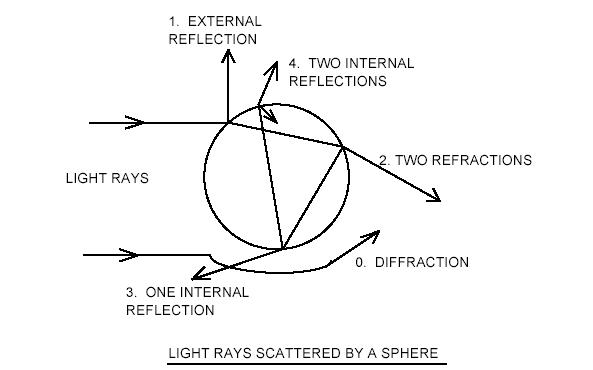
Diffraction means surface scattering that essentially creates
new wave fronts that propogate in the same direction as
the original incident light:
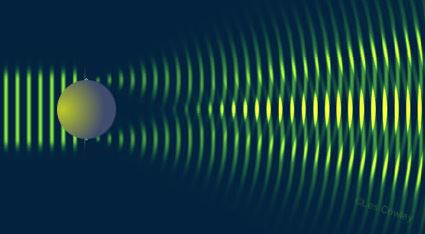
For scattering, the details are all in the ratio of wavelength to scatter particle size. When the particles are very small relative to the wavelength then you have Rayliegh scatterin which
is strongly wavelength dependent (λ-4).
For instance, light (blue) at 4000 angstrom compared to light (red) at 7000 angstroms is satter (7/4)4 = 9 times
more efficiently which of course is why the sky is blue:
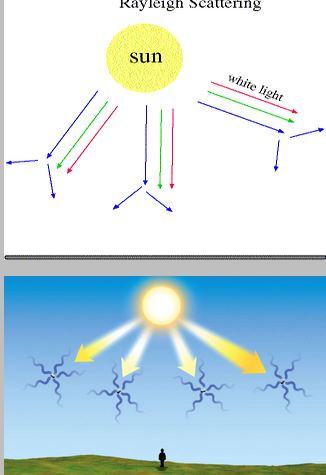
When the particel is of comparable or greater size than incoming wavelength wer have various forms of MIE scattering>
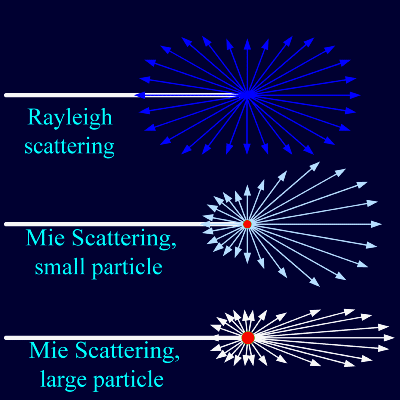
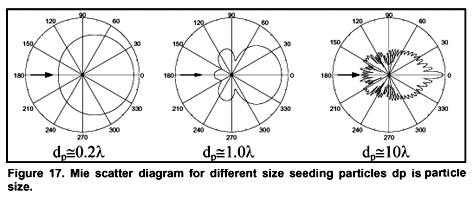
For cloud water droples = equal amounts of light as a function of wavelength are scattered
in all directions so the cloud appears white.
For large particles the incoming light is strongly forward scattered. Each of these particles removes twice the amount of light intercepted by its geometric cross sectional area:
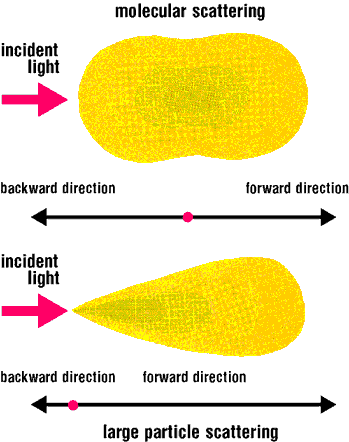
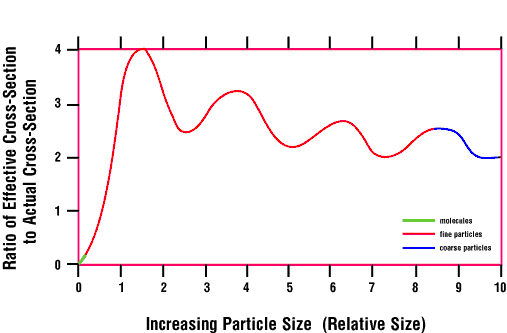
This is why scattering is such a problem in global climate change codes because it strongly influences the matter in which incoming short wavelength radiation is distributed. At anyone time in the
atmosphere, the distrubution of particle sizes for scatters is unknow and therefore has to be modeled/assumed.
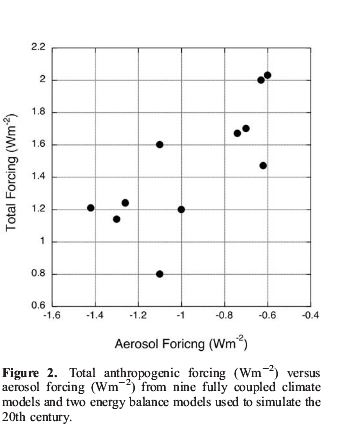
Halos:
This are formed through refractions by ice crystals and come
in two forms. 22 and 46 degree halos. Ice crystals can come
in many shapes, from flat plates to hexagonal or columnar
configurations. The shape depends on the environmental temperature in which the crystal grows:
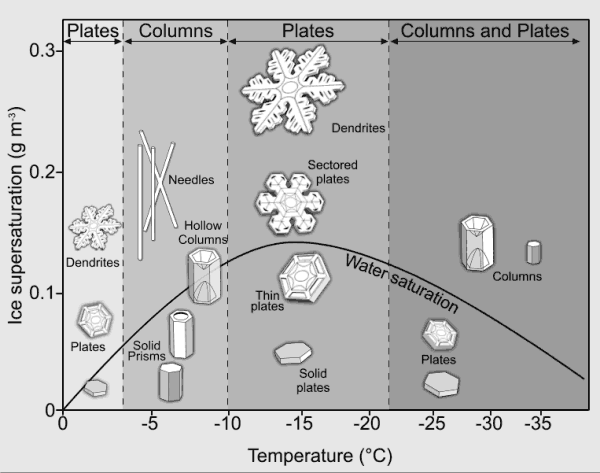
In general, ice crystals grow to in accordance with what ever pattern represents a minimum energy surface state given the conditions.
46 degree halo is formed by refaction path through randomly oriented hexagonal ice crystal (this is a minimum surface energy state):  A 22 degree halo forms due to a different orientation of the ice crystal, one where the
long side is perpendicular to incoming sun/moon light: A 22 degree halo forms due to a different orientation of the ice crystal, one where the
long side is perpendicular to incoming sun/moon light: 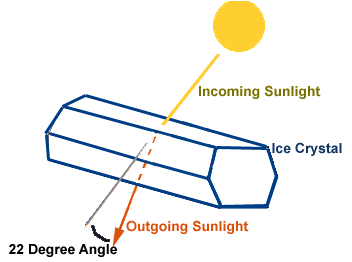
These halos are best observed for moon light:
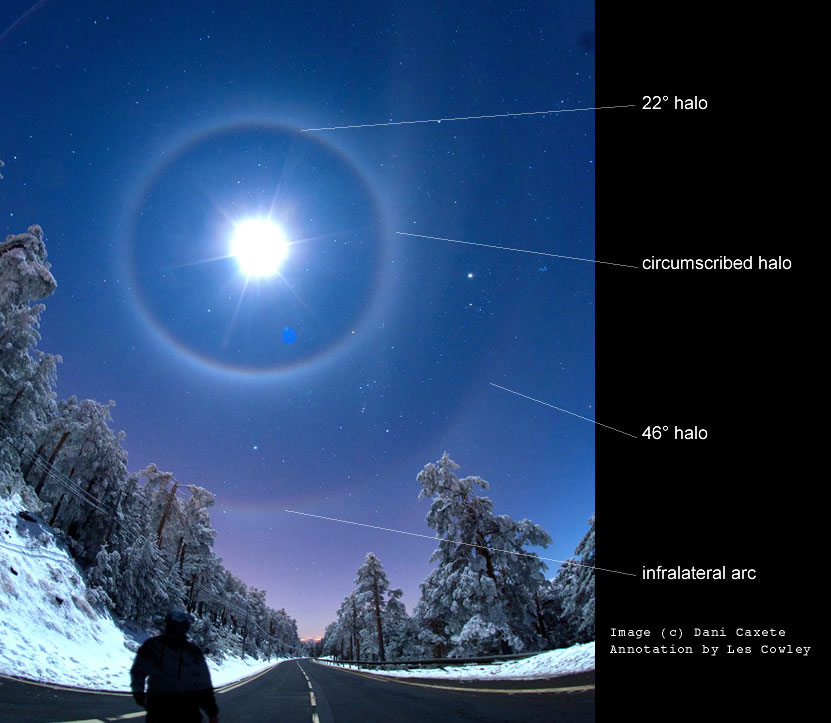
Rainbows: Primary, Secondary and Tertiary:
A tertiary rainbow is an elusive observation:
Photographic evidence for the third-order rainbow, M Grossmann, E Schmidt, & A Haussmann, Applied Optics, Vol. 50, Issue 28, pp. F134-F141 (2011)
Primary Rainbow: (One Internal Reflection)
This is a fairly simple mechanism (which also provides empirical
proof for spherical droplets) that requives a back reflection from the drople and then dispersion through wavelength dependent
refraction. The thickness of the rainbow is about 2 angular
degrees:
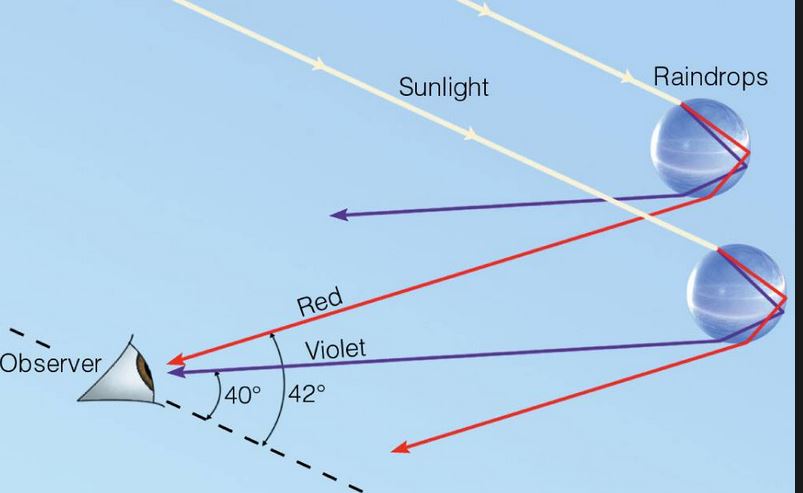
Secondary Rainbow: (Two internal Reflections)
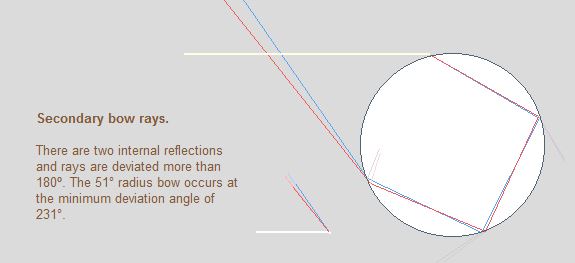
The secondary rainbow is separated from the primary rainbow
by about 10 degrees or about 5 times the thickness of the primary rainbow. The colors are reversed due to the multiple reflections
inside the droplet.
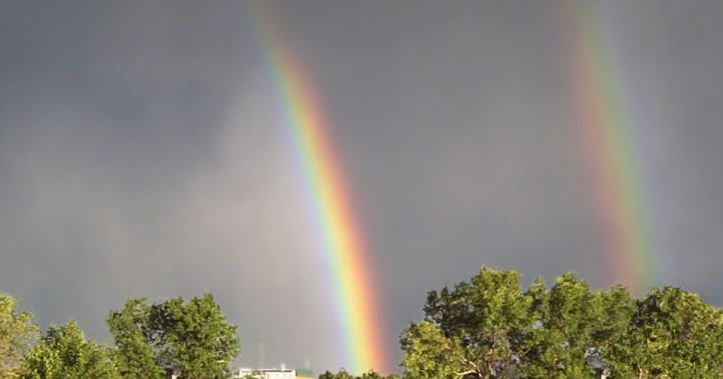
Ice Crystal Optics:
These can be seen all year round but are more prominent
in the winter months. If you see lots of cirrus in the sky, then
look at the Sun, particularly near sunset, to see some of these
features:
Sun Dogs: (22 degree lensing) - common occurence
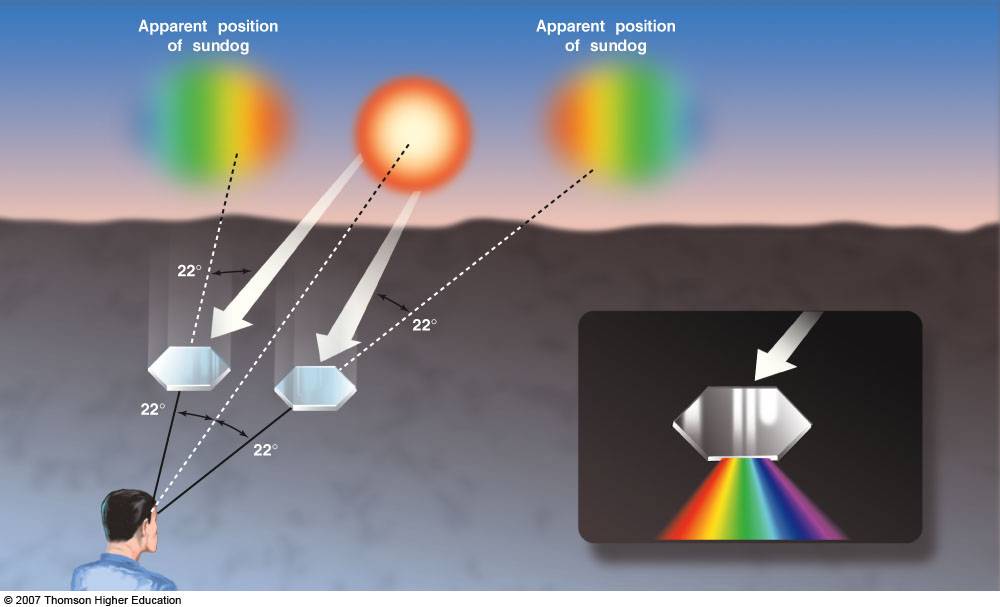
Often there but frequently unobserved:

Pretty Obvious:

Sun Pillars: Rare - seen at sunrise/sunset - representes direct reflections from millions of tiny ice crystals - effects are sometimes colorful and complicated depending on where the crystals are located.
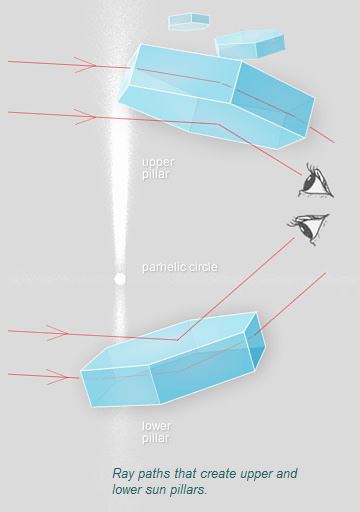
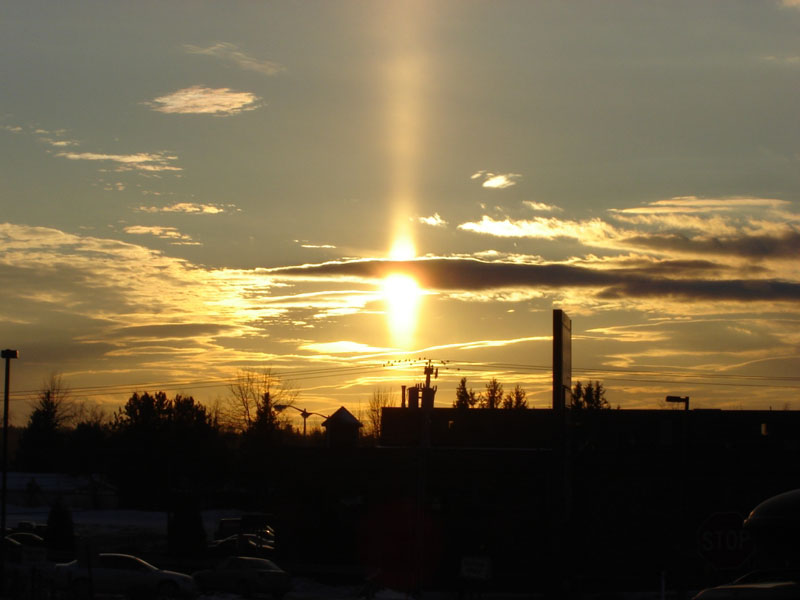
Glories - usually seen on airplanes projected on clouds below:
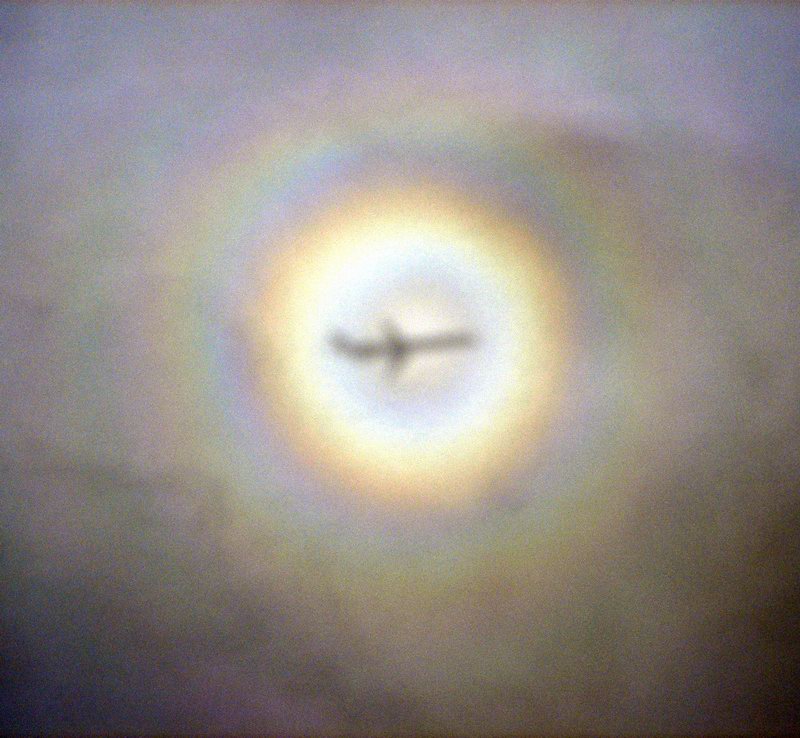
The formation of a glory can occur whenever the sun is
directly behind you and there is a mist or fog or whatever
consisting of tiny uniform droplets that back scatter (thorugh MIE scattering) the incoming
sunlight. If the mist is nearby you can form the glory -
this can be seen on mountain ridges at sunrise:
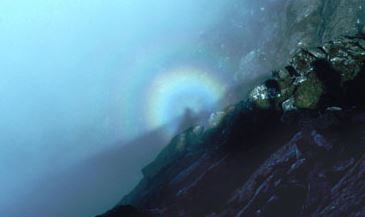
The Fata Morgana
A mirage seen in a narrow band on the horizon whenever there is a temperature inversion. The air below the line of sight is
colder and denser than the air above it, and hence has a different refractive index. The light passing through this layer is bent down so the object image appears to float above the layer. The best place to observe this is over a uniform surface like ice sheets, water, or a smooth desert.

Mountains can appear higher under such conditions:

|